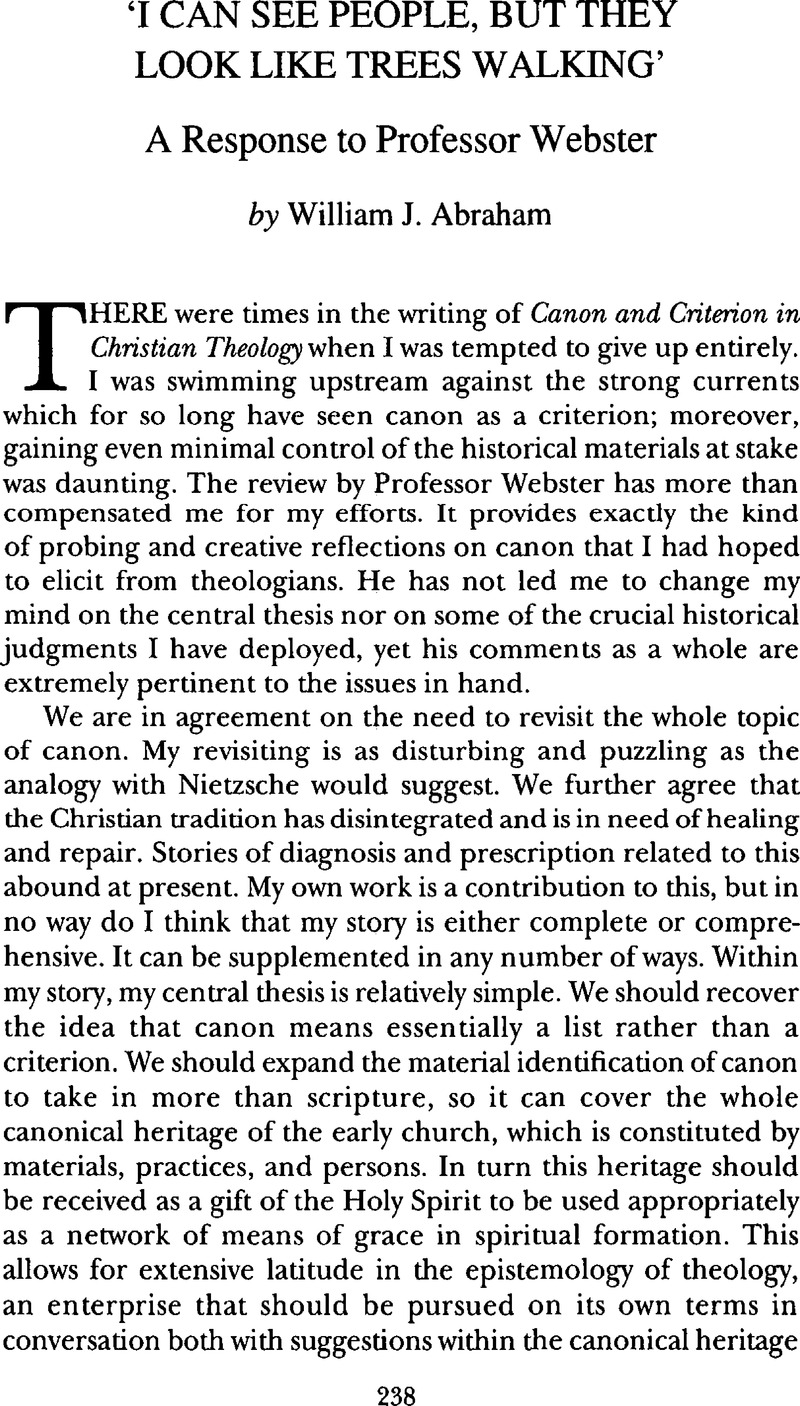Article contents
‘I Can See People, but They Look Like Trees Walking’:A Response to Professor Webster
Published online by Cambridge University Press: 30 January 2009
Abstract

- Type
- Response
- Information
- Copyright
- Copyright © Scottish Journal of Theology Ltd 2001
References
1 I think we need much more than commentary and glosses on canon, but that must remain for another day.
2 Webster objects that this concern with epistemology leads me to fall into the ‘epistemic concentration’ which I deplore. This is not the case. It is one thing to be concerned about epistemology; it is another to locate canon within debates in epistemology. For my part it is right and proper to work through issues of epistemology, a point I make at some length in my last chapter. However, I make it abundantly clear that I want issues of canon to be relocated elsewhere. The burden of much of my argument is that the price we pay for epistemizing the canonical heritage is massive. One way to do this is to show in some detail and in radically different theologies how epistemology warps our way of understanding canon.
3 In a footnote Webster considers that Newman's Grammar of Assent, if included, would somehow be a problem for my analysis of Newman. On the contrary, the Grammar of Assent simply spells out the deeper elements of Newman's remarkable epistemology. It does not at all effect the core of my main argument.
4 This applies equally to the great Princeton theologians. They were remarkable preachers and pastors in their day. The pastoral and devotional work, for example, of Charles Hodge, can be very illuminating and spiritually nourishing. Yet somehow Webster leaves intact my critique of their work. One of the delights of the history I trace is that the nature of scripture often works against the conception of scripture deployed so that scripture continues to function as a means of grace in spite of us and our theories.
5 The latter, of course, remain a matter of debate, as the recent Finnish interpretation of Luther's soteriology makes clear.
6 I stand by the claim that Barth is a foundationalist, indeed an extremely interesting foundationalist.
7 Emphasis added.
- 2
- Cited by


